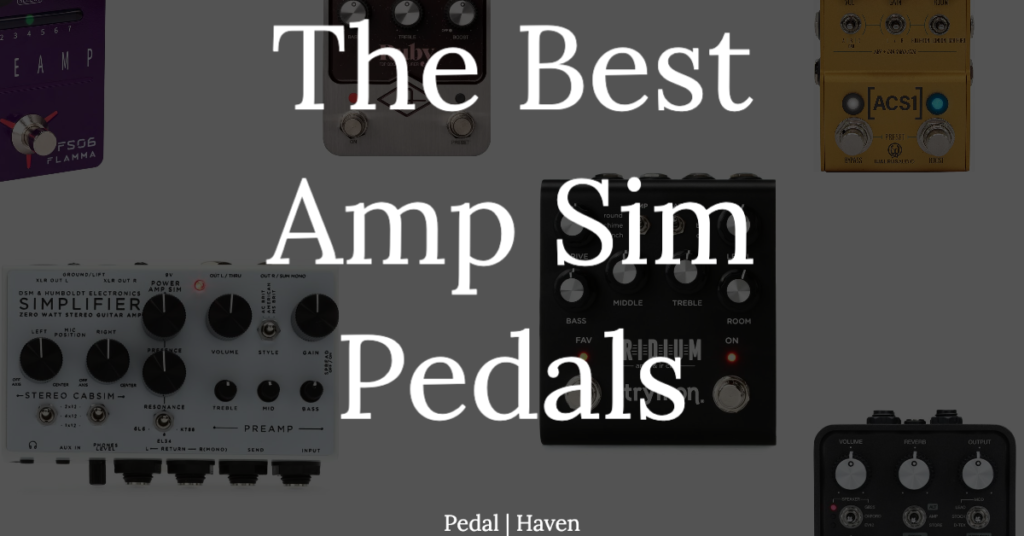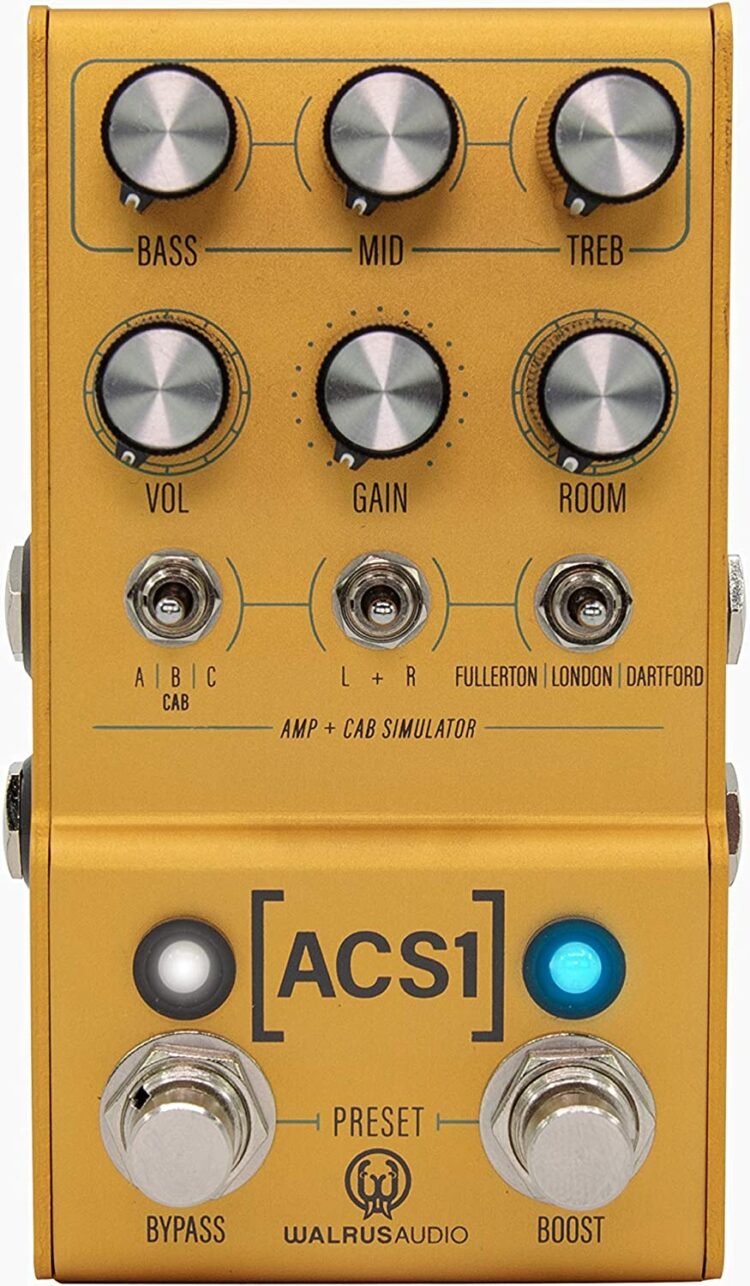When it comes to finding the best amp sim pedals, every guitarist knows the struggle is real. You want that studio-quality tone, but without lugging around a massive rig. That’s where these magical little boxes come into play. Amp sim pedals have become a game-changer for modern musicians, offering convenience, versatility, and killer sound in one compact package. Whether you’re playing gigs, recording at home, or just jamming, these pedals can transform your setup. But with so many options out there, how do you choose?
Let me break it down for you. Think about this: what if you could take your favorite amplifier and shrink it down into a pedalboard-friendly device? Sounds like magic, right? Well, that’s exactly what amp sim pedals aim to do. They replicate the sounds of classic amps, cabinets, and even mics—all in one tiny box. And trust me, they’ve come a long way from the early days. Today’s models are packed with features that make them indispensable tools for any serious guitarist.
So, whether you’re a seasoned pro or just starting out, this guide will help you navigate the world of amp sim pedals. We’ll dive deep into the best options available, explore their features, and give you some insider tips to make the right choice. Let’s get started!
Read also:Emma Anturin A Remarkable Talent In The Spotlight Of Today
Table of Contents
- What is an Amp Sim Pedal?
- Benefits of Using Amp Sim Pedals
- Top 10 Best Amp Sim Pedals
- Key Features to Look For
- How to Choose the Right Pedal
- Common Mistakes to Avoid
- Amp Sim Pedals for Recording
- Brands You Can Trust
- User Reviews and Testimonials
- Conclusion
What is an Amp Sim Pedal?
Alright, let’s start with the basics. An amp sim pedal is essentially a digital device that mimics the sound of guitar amplifiers. Instead of relying on a physical amp, these pedals use advanced algorithms to recreate the tone and feel of popular amps. And here’s the kicker—they don’t stop at just amps. Many models also simulate speaker cabinets, mic placements, and even room acoustics.
For example, imagine having access to a Fender Twin Reverb, Marshall JCM800, and Vox AC30—all in one pedal. Sounds pretty sweet, huh? That’s the power of amp sim pedals. They give you the flexibility to experiment with different tones without needing multiple amps or gear. Plus, they’re super portable, making them ideal for gigging musicians who need to travel light.
How Do Amp Sim Pedals Work?
Now, you might be wondering how these pedals pull off such realistic tones. Well, it all comes down to digital signal processing (DSP). Inside each pedal, there’s a tiny computer that processes your guitar’s signal and applies various effects to replicate the sound of different amps. Some pedals even let you load custom impulse responses (IRs), giving you even more control over your tone.
And let’s not forget about latency. In the past, digital pedals were notorious for introducing delays in the signal chain. But nowadays, most high-quality amp sim pedals have ultra-low latency, ensuring your playing feels natural and responsive. It’s like having a studio-grade rig right on your pedalboard.
Benefits of Using Amp Sim Pedals
So, why should you consider investing in an amp sim pedal? Here’s a quick rundown of the top benefits:
- Portability: No more lugging heavy amps to every gig.
- Versatility: Access to a wide range of tones and effects in one device.
- Convenience: Perfect for recording and practicing at home without disturbing the neighbors.
- Cost-Effective: Save money by not having to buy multiple amps and cabinets.
- Customization: Fine-tune your tone with advanced editing options.
Let’s be real, though. Not everyone needs an amp sim pedal. If you’re happy with your current setup and don’t mind hauling around a full rig, then maybe it’s not for you. But for those who value flexibility and convenience, these pedals are a no-brainer.
Read also:The Life And Impact Of Emma Coronel Aispuro A Closer Look
Top 10 Best Amp Sim Pedals
Alright, let’s get to the good stuff. Here’s a list of the top 10 best amp sim pedals currently on the market. Each one has its own strengths, so make sure to read through and find the one that fits your needs.
1. Line 6 Helix LT
The Helix LT is a compact version of the flagship Helix pedal. It packs in tons of features, including over 60 amp models, 40 cab models, and a wide range of effects. The sound quality is top-notch, and the interface is user-friendly. Plus, it’s built like a tank, so it can handle whatever you throw at it.
2. Boss Katana-Air
While technically an amp, the Katana-Air offers wireless connectivity and built-in effects, making it a great option for those who want both portability and versatility. It’s perfect for practicing at home or small gigs where you don’t need a full rig.
3. Fractal Audio Axe-Fx III
If you’re looking for the ultimate in tone shaping, the Axe-Fx III is the pedal for you. It’s a powerhouse of features, with thousands of presets, advanced editing capabilities, and studio-grade effects. The downside? It’s not exactly cheap, but hey, you get what you pay for.
Key Features to Look For
When shopping for an amp sim pedal, there are a few key features you should keep in mind:
- Number of Amp Models: More models mean more tonal possibilities.
- Effects Library: Look for pedals with a wide range of effects, from reverb to delay.
- Editing Software: Many pedals come with companion software that allows for deeper customization.
- Battery Life: If you plan to use the pedal on the go, make sure it has a decent battery life.
- Connectivity Options: Check if the pedal supports USB, Bluetooth, or other connectivity options.
Remember, not all pedals are created equal. Some prioritize sound quality, while others focus on ease of use. It’s all about finding the right balance for your needs.
How to Choose the Right Pedal
Choosing the right amp sim pedal can feel overwhelming, especially with so many options available. Here are a few tips to help you make the right decision:
First off, consider your budget. High-end pedals like the Fractal Audio Axe-Fx III can set you back thousands, while more affordable options like the Boss Katana-Air are much easier on the wallet. Think about what you can realistically spend and stick to that range.
Next, think about your playing style. If you’re into heavy metal, you’ll want a pedal with powerful distortion and gain options. On the other hand, if you’re more of an acoustic player, you’ll need something with clean and natural tones.
Test Before You Buy
Whenever possible, try to test out the pedal in person. Most music stores will let you plug in and play around with different models. Pay attention to how the pedal feels under your feet and how responsive it is to your playing.
Common Mistakes to Avoid
Even the most experienced guitarists can make mistakes when buying amp sim pedals. Here are a few pitfalls to watch out for:
- Overlooking Latency: High latency can ruin your playing experience, so make sure the pedal has low latency.
- Ignoring Connectivity: Some pedals might not have the connectivity options you need, so double-check before purchasing.
- Underestimating Power Requirements: Some pedals require external power supplies, which can add to the overall cost.
Don’t let these mistakes trip you up. Do your research and read reviews from other users to get a better idea of what to expect.
Amp Sim Pedals for Recording
One of the biggest advantages of amp sim pedals is their ability to enhance your recording setup. Whether you’re recording in a professional studio or at home, these pedals can help you achieve studio-quality tones without the need for bulky gear.
Some pedals, like the Line 6 Helix and Fractal Audio Axe-Fx III, even come with built-in recording interfaces. This means you can plug directly into your DAW and start tracking right away. No more worrying about mic placements or room acoustics.
Tips for Recording with Amp Sim Pedals
Here are a few tips to get the most out of your recordings:
- Use high-quality cables to ensure a clean signal.
- Experiment with different presets and settings to find the perfect tone.
- Don’t be afraid to layer tracks to add depth and dimension to your recordings.
And remember, practice makes perfect. The more you use your pedal, the better you’ll get at dialing in the right tones.
Brands You Can Trust
When it comes to amp sim pedals, there are a few brands that consistently deliver quality products:
- Line 6: Known for their innovative designs and cutting-edge technology.
- Boss: A trusted name in the industry, offering reliable and affordable options.
- Fractal Audio: The gold standard for high-end amp sim pedals.
- Positive Grid: Popular for their user-friendly interfaces and powerful features.
These brands have earned their reputations through years of delivering top-notch products. So, if you’re unsure where to start, these are great places to look.
User Reviews and Testimonials
Let’s hear what some real users have to say about their experiences with amp sim pedals:
“I’ve been using the Line 6 Helix LT for a few months now, and it’s absolutely transformed my setup. The tones are incredible, and the interface is so easy to use. Highly recommend!” — John D.
“The Fractal Audio Axe-Fx III is a game-changer. It’s expensive, but the sound quality is unmatched. If you’re serious about your tone, this is the pedal for you.” — Sarah M.
These testimonials highlight the strengths of these pedals and give you a better idea of what to expect.
Conclusion
So, there you have it—your ultimate guide to the best amp sim pedals. Whether you’re a seasoned pro or just starting out, these pedals offer a world of possibilities for shaping your tone. Just remember to consider your needs, budget, and playing style when making your decision.
And don’t forget to share this article with your fellow guitarists. Who knows? You might just help them find their next dream pedal. Now go out there and start shredding!


